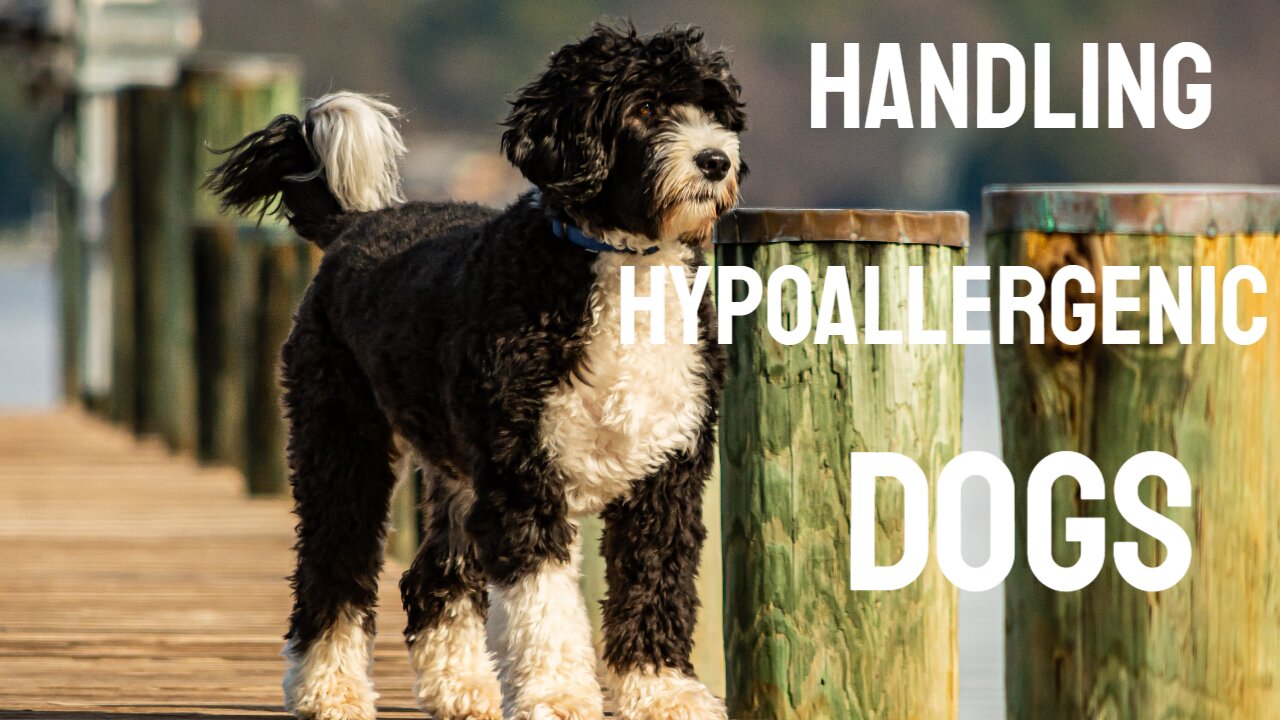Premium Only Content

Handling Hypoallergenic Dogs
Hypoallergenic dogs may appear ideal if you're a dog enthusiast who also suffers from allergies. Allergy sufferers should be assured that certain breeds produce far fewer allergens than others. It's worth noting that some people may still be sensitive to dogs, even if they're supposed to be hypoallergenic.
There are several steps you may take to reduce your vulnerability to an allergic response while interacting with a hypoallergenic dog. The first step is to keep your dog well-groomed. This entails grooming tasks such as combing their fur, clipping their nails, and wiping their ears. Regular grooming can reduce your dog's production of dander and other allergy triggers.
Keeping your house tidy is another vital step. You may lessen the number of allergens in your house by using air purifiers, vacuuming frequently, and cleaning your dog's bedding. To reduce your exposure to allergies, you should also keep your dog out of the bedroom and other sensitive parts of the house.
Do your homework and pick the perfect breed of hypoallergenic dog for you and your family if you're thinking about obtaining one. The poodle, the schnauzer, and the bichon frise are just a few examples of popular hypoallergenic breeds.
Nonetheless, it's worth noting that some people may still be sensitive to certain dog breeds because of individual variation.
In conclusion, hypoallergenic dogs are easier to care for, but they still require regular grooming, a clean environment, and the appropriate breed selection. Although no dog can be guaranteed to be entirely hypoallergenic, these measures should help lessen the likelihood of an allergic response. You should see your doctor and do some reading about hypoallergenic dogs if you're thinking about obtaining one.
-
 26:58
26:58
Stephen Gardner
2 hours ago🔥The Trump-Musk fight EXPLAINED, HUGE White House COVER-UP EXPOSED, Congress Tried To SCREW America!
7.65K13 -
 LIVE
LIVE
Right Side Broadcasting Network
8 days agoLIVE: TPUSA's America Fest Conference: Day Two - 12/20/24
4,938 watching -
 1:51:08
1:51:08
Tucker Carlson
5 hours agoJenner Furst: Secret Chinese Biotech Programs, and the Documentary That Could Put Dr. Fauci in Jail
85.3K74 -
 9:39
9:39
Film Threat
5 hours agoNOSFERATU | Film Threat Reviews
9.17K1 -
 14:33
14:33
IsaacButterfield
11 hours ago $1.99 earnedINSANE WOKE MEN OF TIKTOK!
19.7K12 -
 1:58:16
1:58:16
The Charlie Kirk Show
3 hours agoAmericaFest: Day 2 | Beck, McKoon, Steele, Nagao, Galaszewski, Bowyer, Brown, Amanchukwu | 12.20.24
77.9K5 -
 54:15
54:15
The Dan Bongino Show
6 hours agoSaving The U.S. Military w/ SEAL Andy Stumpf (Ep. 2392) - 12/20/2024
529K808 -
 2:53:55
2:53:55
The Dana Show with Dana Loesch
3 hours agoGOVERNMENT SPENDING BILL FAILS | The Dana Show LIVE On Rumble!
15.8K8 -
 1:01:34
1:01:34
Dr. Eric Berg
3 days agoThe Dr. Berg Show LIVE December 20, 2024
42.6K6 -
 1:01:03
1:01:03
The Rubin Report
5 hours agoTech Legend Gives the Real Odds of Elon Musk Successfully Cutting Gov’t | Joe Lonsdale
57.6K9